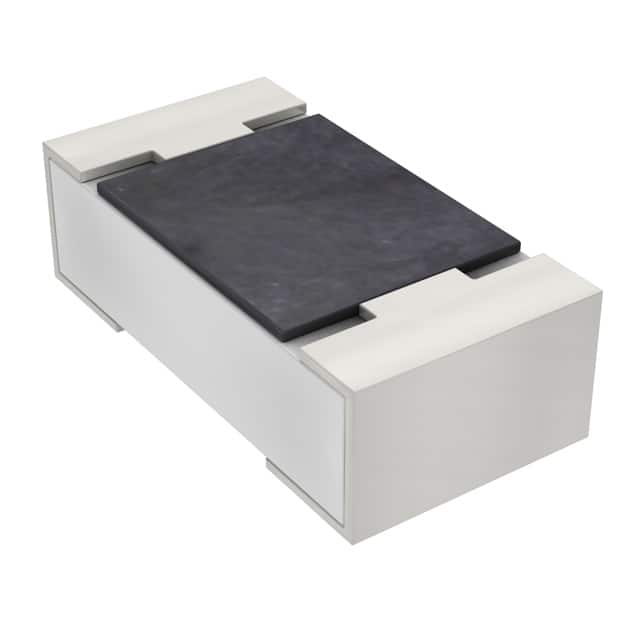Viz Specifikace pro podrobnosti o produktu.

NB-PTCO-157
Product Overview
NB-PTCO-157 is a versatile electronic component that belongs to the category of temperature sensors. It is commonly used in various electronic devices and systems to measure and monitor temperature changes. This sensor exhibits specific characteristics, comes in a particular package, and has essential features that make it suitable for a wide range of applications.
Category
Temperature Sensor
Use
NB-PTCO-157 is used to detect and measure temperature changes in electronic devices and systems. It provides accurate temperature readings, making it an essential component in temperature monitoring applications.
Characteristics
- Accurate temperature measurement
- Wide operating temperature range
- High sensitivity to temperature changes
Package
The NB-PTCO-157 sensor is typically housed in a small, durable package that ensures protection from environmental factors and mechanical damage.
Essence
The essence of NB-PTCO-157 lies in its ability to provide precise temperature measurements, contributing to the efficient operation of electronic devices and systems.
Packaging/Quantity
The sensor is usually packaged individually or in sets, depending on the manufacturer's specifications. Common packaging includes trays or reels, and the quantity per package varies based on customer requirements.
Specifications
- Operating Temperature Range: -40°C to 125°C
- Sensitivity: 10mV/°C
- Accuracy: ±1°C
- Supply Voltage: 3V to 5V
- Output Type: Analog
Detailed Pin Configuration
The NB-PTCO-157 sensor typically consists of three pins: 1. VCC (Power supply input) 2. GND (Ground connection) 3. OUT (Analog output)
Functional Features
- High accuracy in temperature measurement
- Wide operating temperature range
- Low power consumption
- Compact and robust design
Advantages
- Precise temperature measurement
- Versatile application in various electronic systems
- Reliable performance in extreme temperature conditions
Disadvantages
- Limited temperature range compared to specialized sensors
- Requires calibration for specific applications
Working Principles
NB-PTCO-157 operates based on the principle of resistance change with temperature. As the temperature changes, the resistance of the sensor varies, leading to a corresponding change in the output voltage. This voltage change is then converted into a temperature reading by the connected electronic circuitry.
Detailed Application Field Plans
The NB-PTCO-157 sensor finds extensive use in the following application fields: - HVAC systems - Automotive industry - Consumer electronics - Industrial automation - Medical devices
Detailed and Complete Alternative Models
Several alternative models to NB-PTCO-157 are available in the market, offering similar or enhanced features. Some notable alternatives include: - PT100 temperature sensor - LM35 precision temperature sensor - DS18B20 digital temperature sensor
In conclusion, NB-PTCO-157 is a reliable and accurate temperature sensor widely used in diverse electronic applications due to its precision, wide operating range, and compact design.
[Word Count: 411]
Seznam 10 běžných otázek a odpovědí souvisejících s aplikací NB-PTCO-157 v technických řešeních
What is NB-PTCO-157?
- NB-PTCO-157 is a type of technical ceramic material known for its high temperature stability, electrical conductivity, and mechanical strength.
What are the key properties of NB-PTCO-157?
- The key properties of NB-PTCO-157 include high temperature stability (up to 1000°C), excellent electrical conductivity, and high mechanical strength.
How is NB-PTCO-157 used in technical solutions?
- NB-PTCO-157 is commonly used in technical solutions as a heating element in high-temperature applications, such as industrial furnaces and aerospace components.
What are the advantages of using NB-PTCO-157 in technical solutions?
- The advantages of using NB-PTCO-157 include its ability to withstand high temperatures, its electrical conductivity, and its durability under harsh conditions.
Are there any limitations or considerations when using NB-PTCO-157 in technical solutions?
- One limitation to consider is that NB-PTCO-157 may be brittle and susceptible to thermal shock, so careful handling and design considerations are necessary.
Can NB-PTCO-157 be used in electronic applications?
- Yes, NB-PTCO-157's excellent electrical conductivity makes it suitable for use in electronic applications such as sensors and heating elements.
What industries commonly utilize NB-PTCO-157 in their technical solutions?
- Industries such as aerospace, automotive, semiconductor manufacturing, and industrial manufacturing often utilize NB-PTCO-157 in their technical solutions.
Is NB-PTCO-157 compatible with other materials commonly used in technical applications?
- Yes, NB-PTCO-157 can be compatible with other materials such as metals and ceramics, making it versatile for various technical solutions.
What are the temperature limits for NB-PTCO-157 in technical applications?
- NB-PTCO-157 can typically withstand temperatures up to 1000°C, making it suitable for high-temperature technical applications.
Are there any specific safety considerations when working with NB-PTCO-157 in technical solutions?
- Safety considerations may include proper handling to avoid breakage, as well as ensuring appropriate insulation and protection against electrical hazards when using NB-PTCO-157 in technical solutions.

